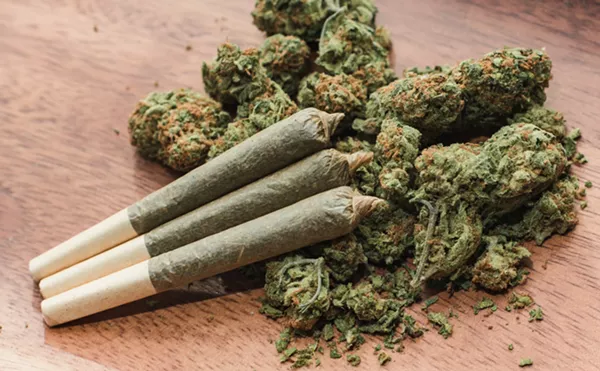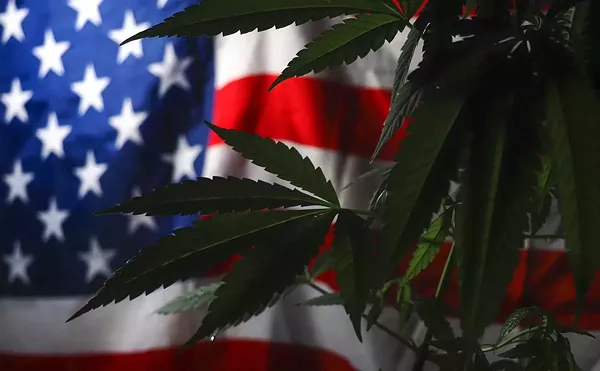What a waste of the state Legislature’s time. SB660 was passed by the Michigan Senate last week to much posturing and politicking by our lawmakers, and a fair amount of grousing by marijuana legalization activists. I’m not sure why any of them bothered.
Senate Bill 660 says that if the federal government ever reschedules marijuana, then Michigan will allow the Canadian corporation Prairie Plant Systems (PPS) to run 16 marijuana grows in the state to produce what they consider certified “pharmaceutical grade” marijuana that would be sold in drug stores.
The system would not replace the current system of patients and caregivers — it would be another option for patients. That’s if and when the feds change the scheduling of marijuana from its classification as a drug with no accepted medical use.
If you’ve been paying attention, PPS is the same company that floated the idea of growing marijuana in a former copper mine in the Upper Peninsula last year. Chuck Perricone, the former GOP Michigan House speaker, is a lobbyist for PPS, which probably explains how this legislation showed up in our legislature — and seemed to slide through like greased lightning. At the same time, HB4271, which would allow municipalities to decide whether to allow dispensaries within their borders, and HB4623, which would decriminalize small amounts of marijuana for recreational use, are stalled in committee. And, as the federal government has not shown any inclination to reschedule marijuana, the whole thing seems an exercise in corralling possible future money from a possible future change in federal policy. It has no impact on what is going on in the state right now — or anytime in the foreseeable future.
PPS was formerly the exclusive producer of medical marijuana in Canada. According to a report on lansingonlinenews.com, the company has a spotty record. It produced only one strain of cannabis with a 7 percent THC level and no reported CBD.
Canadians for Safe Access reported in 2007 that samples of the plant from a PPS grow in an abandoned copper and zinc mine in Manitoba showed substantial levels of arsenic and lead. Legislative support for SB660 was based on the unsubstantiated idea that there is dangerous marijuana in circulation with all kinds of molds, pesticides and other toxins — in addition to nonstandard potencies. HB4271 requires testing for molds and toxins.
Perricone testified that, “Our fundamental premise is that we, in fact, make it medical — pharmaceutical grade, pure, predictable and measurable, tested every step of the way. It will be, we believe, a small segment of the market, but it will be a choice. It will be an option.”
So why did the senate bother with this? It’s probably a sign that even senators in the state realize that medical cannabis is not going away and interested parties are lining up for the profits. Furthermore, it all would be pretty much moot if decriminalization were to come to Michigan. HB4623 would do that. If the legislature doesn’t do it, then activists expect to run a well-financed decriminalization initiative no later than 2016.
Washington State and Colorado Gear Up
In the meantime, concerned eyes the world over are focusing on Washington state and Colorado as they set the rules for legal cannabis. They are busy as bees (or buffalos) in Colorado. I called the state National Organization for the Reform of Marijuana Laws (NORML) office and was told that I could get an interview with the director in the first week of December. I did better in Washington, talking with Ken Oliver, a member of the national NORML board and director of the Washington state affiliate. There, the state Liquor Control Board is in charge of implementing the new system.
“Realistically, I’m excited about it,” Oliver says. “People who want to see prohibition end have a lot of hope. There are not many hiccups. Sometimes I try to step back but I’m in the forest and can’t see anything but trees; to get perspective is difficult.”
Perspective? How about the whole world that wants to see how the first legal cannabis system since the substance was made illegal in 1937 turns out?
The Washington rules call for 334 retail stores statewide, with 21 in Seattle, its biggest city. On Monday, Washington began taking applications for licenses by producers, processors and retailers. Producers and processors cannot be retailers (and vice versa), and any single entity can have no more than three retail outlets. Initially, there will be 21 stores in Seattle and 332 statewide. No retail outlet can be within 1,000 feet of a school or a park. There are lots of behind-the-scenes rules regarding growing, testing and security, but that’s insider stuff we don’t need to get into. There will be adjustments once authorities get a sense of how much demand is out there. Retail packaging is another issue. It has to be child-resistant and have labeling with warnings and dosage declarations. In Washington, residents and nonresidents who are 21 and older can buy as much as 1 ounce at a time.
Colorado’s system is different. The first licenses there are going to existing medical marijuana outlets, which can flip any existing inventory over to the new system. There, residents can buy as much as 1 ounce, while nonresidents can buy only 1/4 ounce. Also, Colorado residents can grow as many as six plants in their home for their own use. In Washington, individuals cannot grow their own. However, the state’s medical marijuana system is still in place, wherein anyone who has a recommendation from a doctor can grow up to 15 plants for personal use. There is no state registry there.
Both states are struggling with issues and rules regarding public consumption. In Washington, it’s a civil offense punishable with a $150 fine, the same as for public consumption of alcohol. In Denver, where public consumption has become an issue, proposed strict laws making marijuana illegal in some places are working through the system.
“The people who put this together are coming from the right place,” Oliver says of the state administrators. “I don’t vilify or try to find things wrong with them. The reason it went to the liquor control board is it had the infrastructure to do it. I don’t think the two substances should be compared.”
The two shouldn’t be compared. And technically speaking, we know less about marijuana than we do about alcohol. So there is plenty to learn about how this process works. The world is waiting to get schooled.








